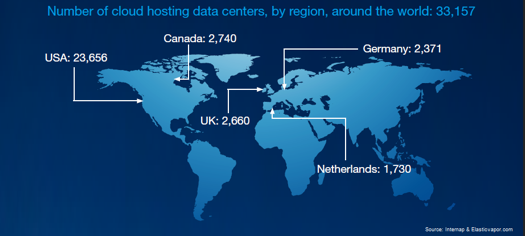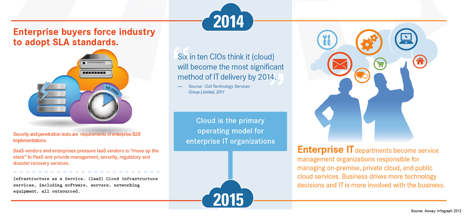In the previous piece, we talked about cloud computing and pointed to four ways corporate IT can benefit from the cloud. In part two, we will address what should be going on “behind the scenes” of a 21st century data center services provider.
For the last 5 years, the term “cloud computing”, has been used to describe a large and ever-expanding list of outsourced IT products and services. The definition will continue to evolve but more importantly, what is keeping these services alive today? What’s going on “behind the scenes”?
Data centers require power. Its utilization and cost are the lifeblood of IT and cloud computing services, which has prompted some large technology companies to host their “cloud operations” in regions with access to cheap power.
Case in point, last year, both Apple and Facebook announced large multi-million dollar data center expansions in North Carolina. For the vast majority of cloud service companies, opening and managing new data centers is not an option. Instead of taking on the burden of infrastructure costs and support, they will opt to work with a partner who has satisfactorily met the requirements of a 21st century data center.
Those are as follows:
- Robust Design > Scalable compute cannot rest on an SLA (service level agreement) full of lofty “9’s” – which refers to uptime and is measured in “nines” as in 99.9% (“three nines”). The more nines indicated, the better. Rather, it has to rely upon a robust relationship with local utilities and a UPS (uninterruptible power supply) architecture that is built and managed by experienced in-house electrical engineers that put Murphy’s Law front and center in everything they do.
- Robust Network > Latency is an e-commerce killer. A robust data center, has equally robust peering relationships, organic layer 2 MPLS and Layer 3 IPv4 / IPv6 transit networks riding on top of it supported by a network engineering team that also puts Murphy’s Law front and center in everything they do.
- Standards > The Auditing Standards Board of the American Institute of Certified Public Accountants (AICPA) announced new requirements for reporting on controls at all service organizations, replacing the SAS 70 report with SSAE 16. This is a good starting point, but as data centers take on more responsibilities they must also assimilate the same standard controls of their clients.
The 21st century data center simply cannot afford to take anything for granted.
Conclusion:
For years, data centers were worlds unto themselves in the IT landscape until now because just like their traditional IT clients, the cloud represents an evolutionary step for them. The cloud is also a logical step since data centers literally own the foundations upon which the cloud depends on.
Knowing this, a handful of progressive minded data center operators took the leap of faith last year and entered the cloud services market themselves. What they have in common include the following:
- Sound fundamental architectures
- Sound compliance backgrounds
- They service a diverse cliental
- They provide top-down network & DR services
- Have completed a wide variety of scalable deployments
- Are leveraging a wide variety of experienced relationships from developers to MSPs
Cloud services providers (offering IaaS and beyond) with roots as data center operators, bring to the table not only the technical expertise gained through years of serving a vast and diverse set of highly technical clients (including SaaS, DbaaS, etc.), but they actually own the buildings that call these client networks home which means they can make power, rack space, and IP available for their clouds leveraging a truly top-to-bottom portfolio of services few have or could afford alone.
This post was created by content from AIS Sales Engineer, Anthony De Monroy.













